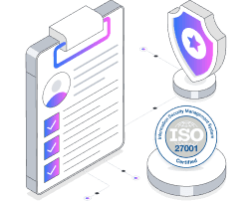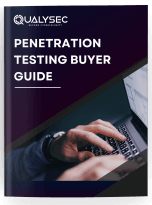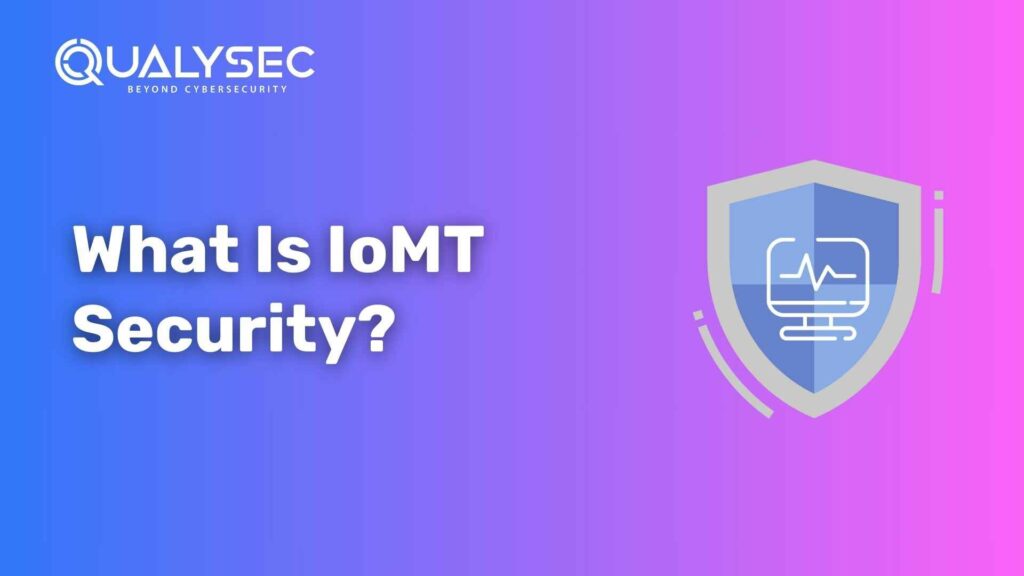What Is IoMT Security?
The Internet of Medical Things (IoMT) is revolutionizing healthcare, allowing for better patient care, streamlined operations, and faster diagnoses. However, as IoMT devices proliferate, they bring with them a host of cybersecurity risks. For cybersecurity professionals, making sure the security of these devices is important; after all, we are not just protecting data but also lives. This blog will explore IoMT security, breaking down what it is, its importance, the unique challenges it presents, and actionable strategies for securing IoMT ecosystems. If you are a security specialist, this blog will provide you with the knowledge to deal with IoMT vulnerabilities effectively. What Is IoMT? IoMT, or the Internet of Medical Things, refers to a network of interconnected medical devices and applications that use online platforms to collect, transmit, and analyze data. Examples include wearable heart monitors, insulin pumps, connected imaging systems, and even smart hospital beds. These devices improve operational efficiency and patient care by taking benefits of data insights in real time. According to Fortune Business Insights, the global market for IoMT is expected to hit $187.60 billion by 2028, proving that this technology is more than a passing trend; it is the future of healthcare. However, as its adoption grows, so does the attack surface. IoMT security is also known as medical IoT security. Why IoMT Security Matters IoMT devices are unique because they are not just storing health records or processing insurance claims. They are embedded in life-saving workflows. For example: For security professionals, this means IoMT security isn’t just about protecting sensitive data, such as protected health information (PHI). It is also about safeguarding patient safety. Key Challenges of IoMT Security IoMT is one of the most dynamic technological settings, but its growth comes with some serious security challenges: 1. Device Vulnerabilities IoMT devices often have outdated software or weak security features. Many are built with minimal computing power, which makes retrofitting robust security measures like encryption difficult. 2. A Complex Ecosystem Hospitals and clinics rely on hundreds, if not thousands, of devices from multiple manufacturers. Guaranteeing interoperability while securing countless devices creates a chaotic and high-risk environment. 3. Regulatory Compliance IoMT security isn’t just about stopping hackers, it is also about staying compliant with stringent healthcare regulations like HIPAA and GDPR. Adding to the complexity, these laws vary across regions. 4. Data Centralization IoMT devices generate massive volumes of data, often stored in centralized databases or the cloud. A single vulnerability in one of these storage methods could compromise an entire network’s worth of sensitive health records. 5. Insider Threats Security isn’t always breached externally; insider threats like misconfigurations or unethical hackers can create vulnerabilities in IoMT systems. “Explore our recent article on What Is Iot Security Testing and Why It Matters!“ Best Practices for Securing IoMT Devices Implementing robust IoMT security measures requires a comprehensive approach. Here are the best practices that security specialists can follow to ensure reliable protection: 1. Secure Endpoints: Address the Weakest Link IoMT devices operate as endpoints within a broader network, and they often represent the weakest link in the security chain. Their limited processing power and outdated software make them particularly vulnerable to exploitation. A compromised device doesn’t just present a risk to itself, it can be leveraged as a gateway to attack the larger network. 2. Apply Zero Trust Principles The Zero Trust model operates under the assumption that no device or user should be trusted by default, even those within the network’s perimeter. This foundational principle is crucial for IoMT security. By applying Zero Trust principles, you can significantly reduce the potential attack surface for IoMT vulnerabilities. 3. Encrypt Data from Source to Destination IoMT devices collect and transmit sensitive patient data, making encryption a non-negotiable aspect of IoMT security. Cybercriminals shouldn’t be able to intercept and understand what these devices are sending. Effective encryption safeguards sensitive information so that it remains confidential and unaltered. 4. Monitor Networks for Anomalies Proactive monitoring is critical for detecting and responding to threats before they escalate into major incidents. IoMT devices continuously generate data, and analyzing this activity can help identify anomalies that indicate potential breaches. Regular network monitoring ensures you’re not just reacting to attacks but actively stopping them before they cause harm. “IoMT security depends on strong testing. Check out our guide on IoT device pen testing.“ Latest Penetration Testing Report Download Protecting the Future of Healthcare IoMT security is not just a technical requirement, it is a necessity for protecting lives, building trust, and ensuring operational continuity in healthcare. By securing endpoints, adopting Zero Trust principles, encrypting data, and actively monitoring networks, security specialists can create resilient systems to counter emerging threats. QualySec is a reputable name in the market that offers IoMT security testing evaluation and services. We know that the healthcare sector’s commitment to security is directly tied to patient safety and trust. That’s why choosing us assures you that you get robust IoMT security. Understanding the evolving IoMT security takes time and expertise, and no one can beat the trust and expertise of QualySec. For further insights or ways we can help, feel free to reach out to us! Talk to our Cybersecurity Expert to discuss your specific needs and how we can help your business. Schedule a Call




